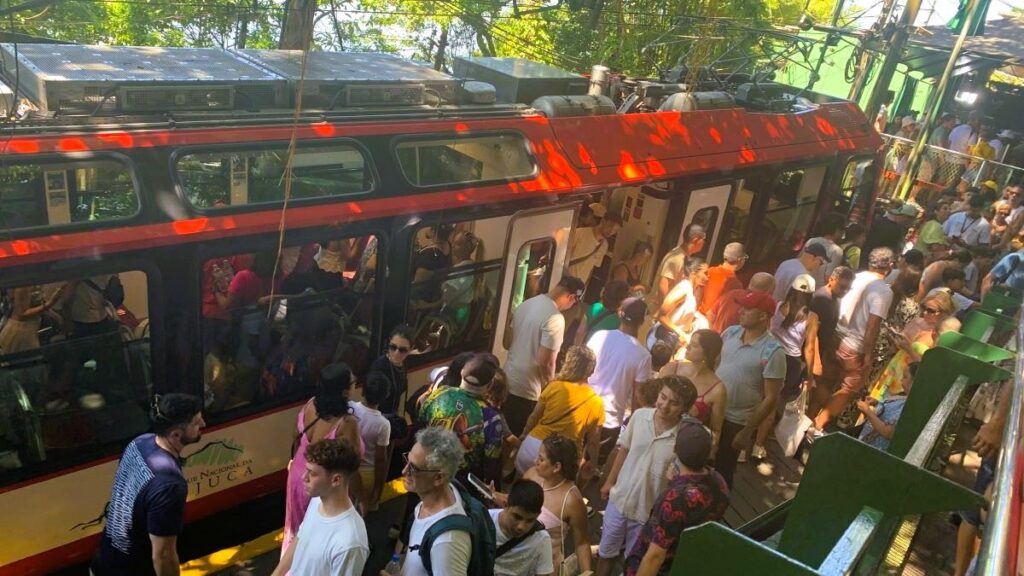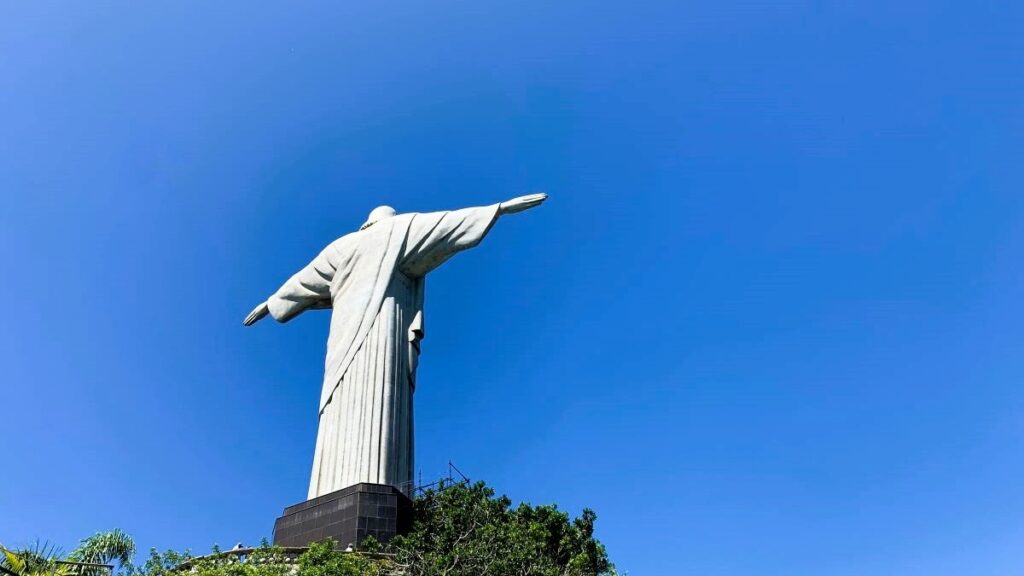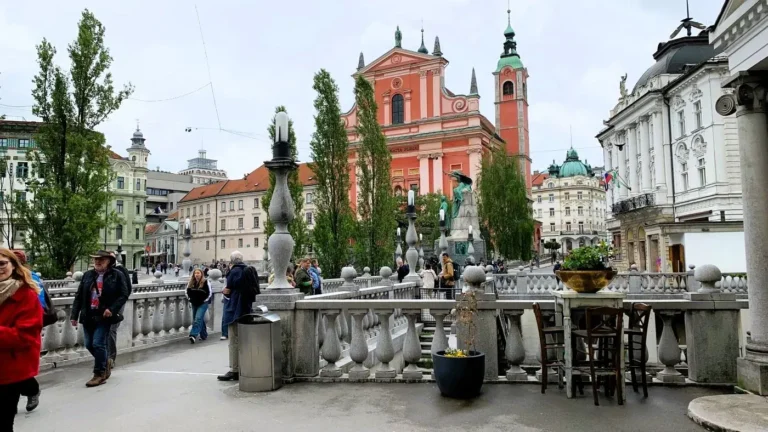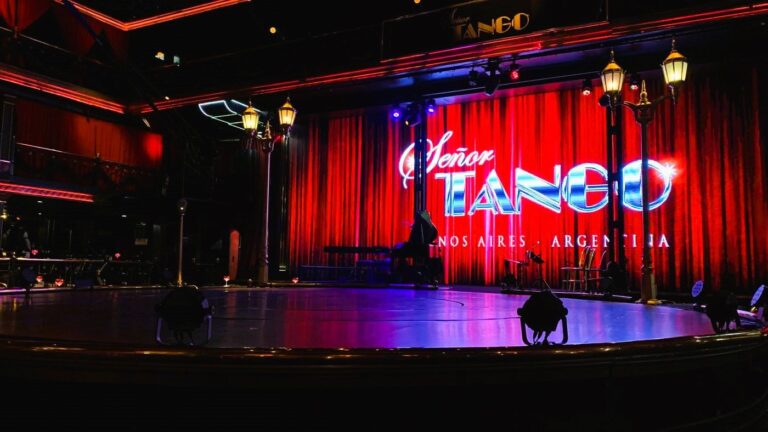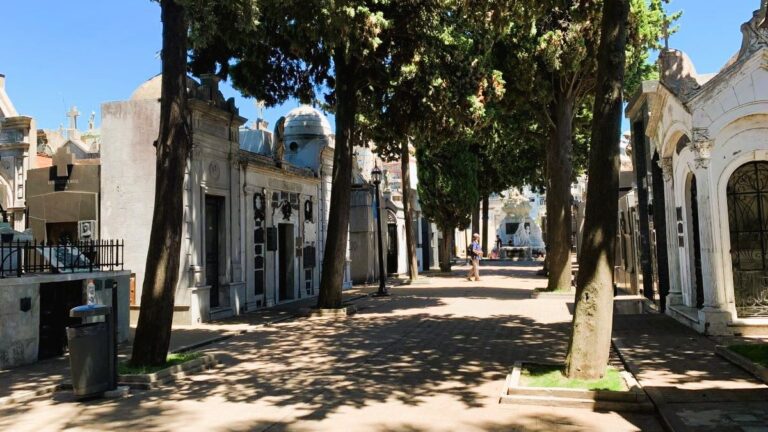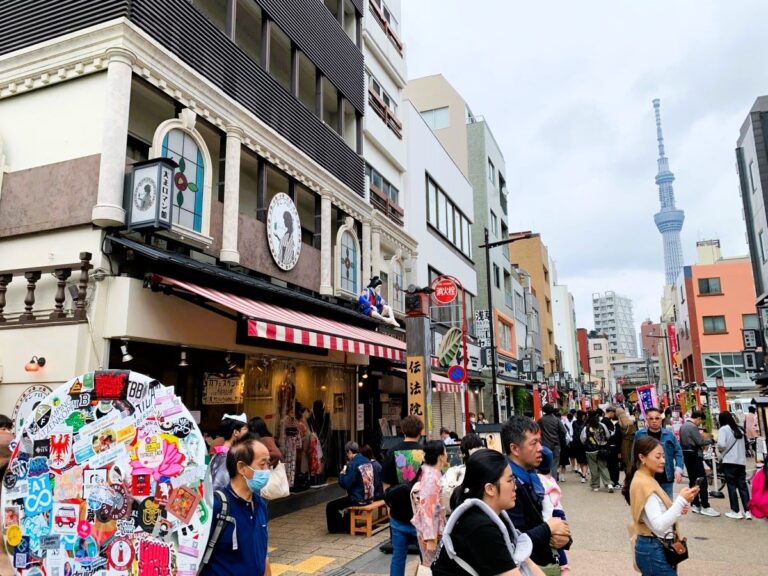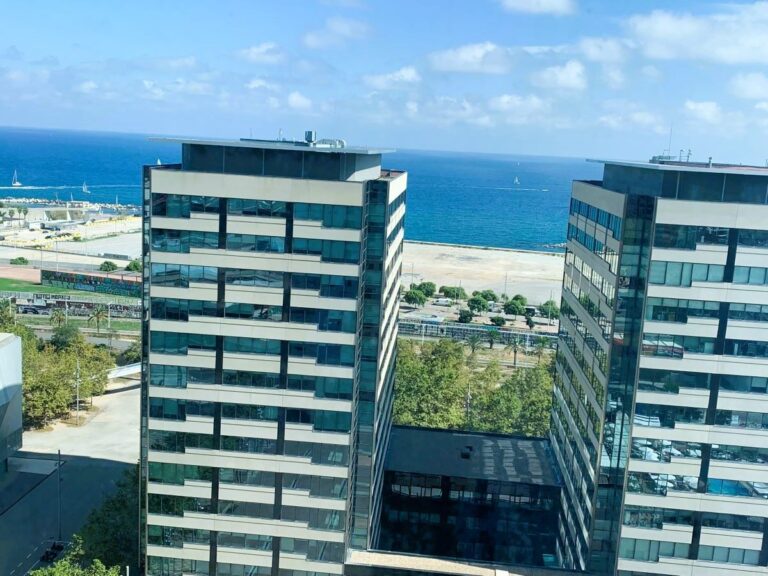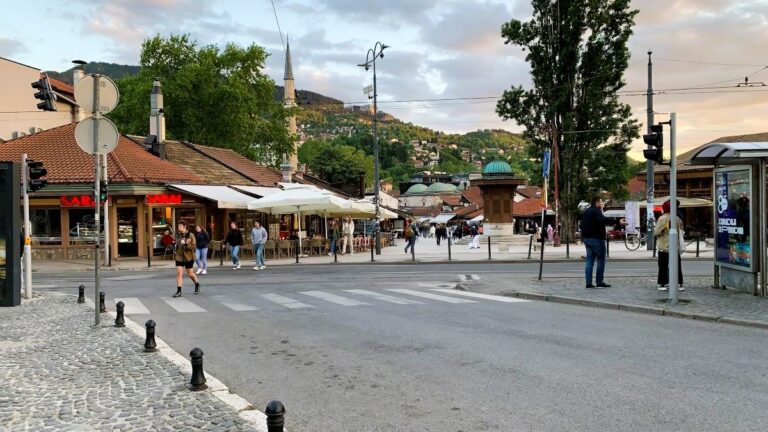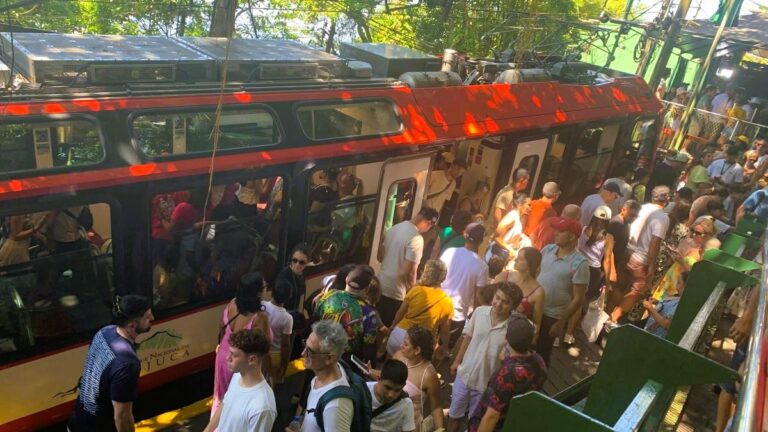Brazil Travel Guide [2025]: What First-Time Visitors Need to Know
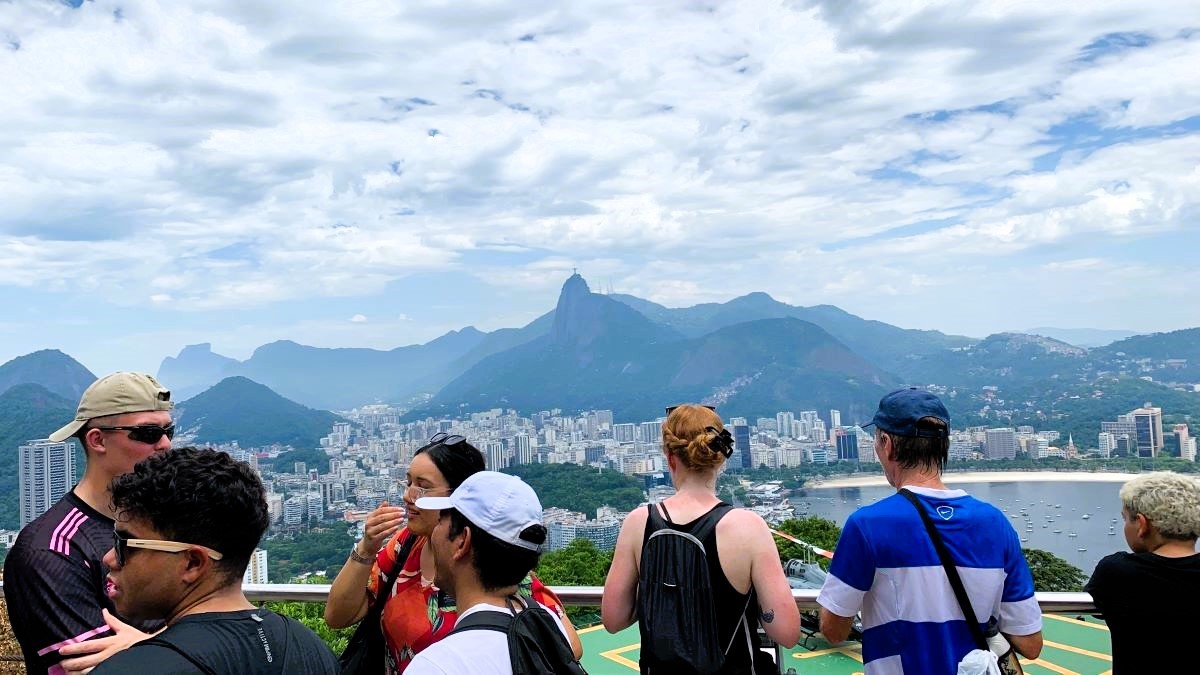
Brazil is a place that’s full of life — from the famous beaches in Rio to the peaceful beauty of the Amazon rainforest. Its sprawling beauty and rich culture can be overwhelming for first-time visitors, but preparation is key.
This Brazil Travel Guide covers practical advice, from visa and entry requirements and safety tips to must-see destinations, giving you everything you need to plan with confidence. Understanding the basics will help you uncover the wonders of this remarkable country.
Need help in planning an overseas trip? Check my step-by-step guide: 10 Essential Trip Planning Tips: A Step-by-Step Guide on How to Plan an Overseas Trip
Related Posts:
Visa and Entry Requirements
Brazil has simplified its entry requirements in recent years, making it easier for many international travelers to visit this amazing country. The specific documents you’ll need depend on your nationality, so it’s always smart to check the most current requirements before planning your trip.
Starting April 10th, 2025, nationals of AUSTRALIA, CANADA, and THE UNITED STATES will require a visitor visa to travel to Brazil as visitors. Citizens of these countries MUST apply for an electronic visa (e-Visa) without the need to visit the Consulate for document issuance.
ALL e-Visa applications are received, managed and processed by VFS Global. The e-Visa application MUST be submitted through their website: brazil.vfsevisa.com. The processing fee is US$ 80.90, and the processing time is approximately 5 business days.
When arriving in Brazil, immigration officers might ask to see proof of onward travel (like a return flight) and evidence that you have sufficient funds for your stay. While these checks aren’t always enforced, having this information readily available can prevent any hiccups at the border.
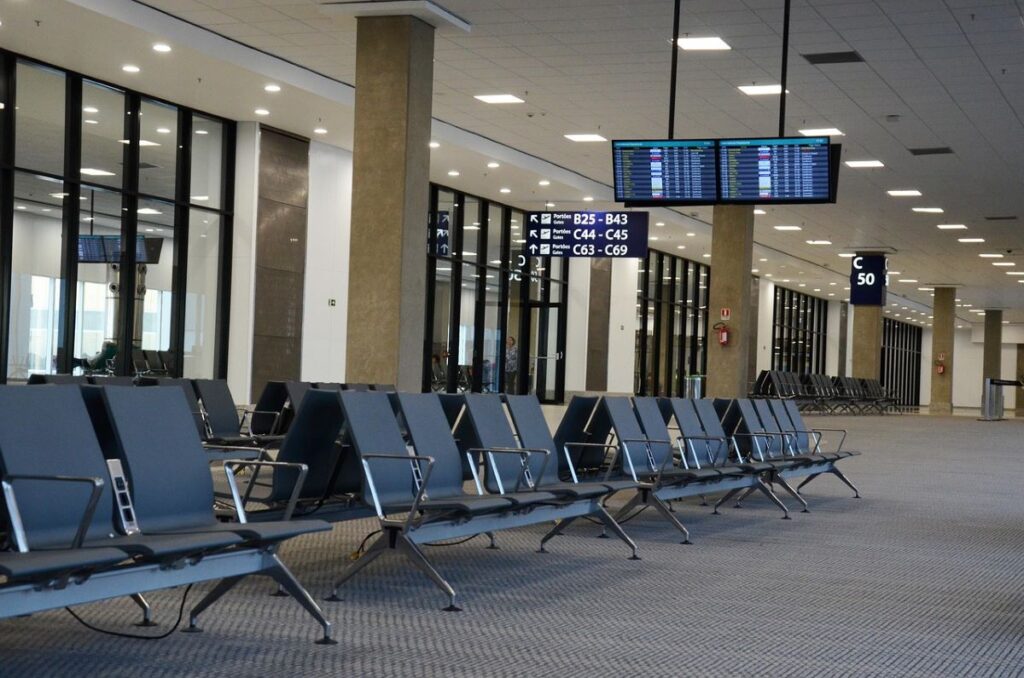
If you’re planning to stay longer than 90 days or are traveling for work, study, or other non-tourism purposes, you’ll likely need to apply for the appropriate visa before your trip. The Brazilian consulate or embassy in your home country is your go-to resource for specific visa requirements and application procedures.
Upon arrival, you’ll receive an entry stamp in your passport along with a small white immigration card. Keep this card safe with your passport—you’ll need to return it when leaving the country. Losing this card can result in delays and possible fines when departing.
For those driving into Brazil from neighboring countries like Argentina or Uruguay, the process is similar, though you’ll need to show your vehicle documentation and possibly purchase temporary auto insurance at the border crossing.
What Language Do They Speak in Brazil?
When you arrive in Brazil, you’ll quickly notice that Portuguese—not Spanish—is the main language here. This surprises many first-time visitors! While the languages share similarities, calling them the same would be like mixing up hamburgers and hot dogs.
Most Brazilians you’ll meet, especially in tourist areas, understand basic English words and phrases. However, less than 10% of Brazilians speak English fluently, so learning a few Portuguese expressions will make your journey much smoother.
Brazilians really appreciate when visitors make an effort to speak their language, even if you’re just saying “Bom dia” (Good morning) or “Obrigado/Obrigada” (Thank you).
Carry a translation app on your phone—Google Translate works well and can even translate signs through your camera.
Many younger Brazilians, particularly in cities like Rio and São Paulo, speak some English and are usually happy to help lost tourists.
Brazilian Portuguese has a different accent and some vocabulary differences from European Portuguese. It sounds more melodic, with softer consonants. Don’t worry about perfection—Brazilians are patient and will help you along.
Some super useful phrases to know:
“Com licença” (Excuse me)
“Quanto custa?” (How much does it cost?)
“Onde fica o banheiro?” (Where is the bathroom?)
“Não entendo” (I don’t understand)
Hand gestures and smiles go a long way when words fail. Brazilians communicate expressively, so don’t be surprised by friendly touches on the arm during conversation—it’s just their warm culture shining through!
Cultural Mosaic of Brazil
Brazil’s culture is like a colorful mix of Indigenous, African, European, and Asian influences. This creates the welcoming atmosphere you’ll feel everywhere you go.
Music flows through daily life here. The infectious rhythms of samba originated in Rio’s favelas and now define Brazilian identity worldwide.
In Salvador, you might hear the powerful drums of Afro-Brazilian music traditions like axé and afoxé.
Bossa nova, with its gentle jazz-influenced sound, was born in the beachside apartments of Rio in the 1950s.
Carnival is Brazil’s most famous celebration—an explosion of color, music, and dance that takes over the country before Lent.
While Rio’s version with elaborate parade floats and costumed dancers gets the most attention, each region celebrates differently.
In Recife and Olinda, giant puppet parades and frevo dancing dominate, while Salvador’s carnival centers around massive street parties led by music trucks called trio elétricos.
Beyond Carnival, Brazil celebrates countless festivals throughout the year.
June Festivals honor saints with country dancing, colorful decorations, and delicious corn-based treats.
Bumba Meu Boi in the northeast combines folklore, music, and theater in a fascinating cultural display.
Brazilian art reflects this cultural diversity too. From the modernist architecture of Oscar Niemeyer to the bold street art covering urban walls, creativity shines everywhere.
Indigenous crafts, particularly from the Amazon, showcase incredible basketry and featherwork techniques passed down through generations.
Savor the Flavors: Brazilian Cuisine
A Brazil travel guide would be incomplete without the mention of food. Brazilian food is as diverse as its culture, offering mouthwatering dishes that vary dramatically from region to region.
The country’s cuisine combines Indigenous ingredients with African cooking techniques and European influences to create something truly unique.
No trip to Brazil is complete without trying feijoada, the national dish. This hearty black bean stew cooked with various pork cuts is typically served on Saturdays with rice, collard greens, farofa (toasted cassava flour), and orange slices. It’s a meal meant for sharing and taking your time over.
In the south, churrasco (Brazilian barbecue) reigns supreme. At rodízio restaurants, servers continuously bring skewers of perfectly grilled meats to your table until you surrender by turning your service card from green to red. The meat is simply seasoned with rock salt but packed with flavor.
Coastal areas shine with seafood dishes like moqueca, a fragrant fish stew made with coconut milk, palm oil, tomatoes, and herbs, served bubbling hot in a clay pot.
In the Amazon, freshwater fish like tucunaré (peacock bass) is often prepared with local herbs and served with açaí, a purple berry that’s eaten as a savory side dish there rather than the sweetened breakfast bowl you might know.
Street food is everywhere and absolutely worth trying. Look for coxinha (teardrop-shaped fried dough filled with shredded chicken), pão de queijo (cheese bread made with cassava flour), and pastéis (crispy fried pastries with various fillings).
At beaches, vendors sell grilled cheese on sticks, fresh coconut water, and açaí smoothies.
Don’t miss Brazilian sweets like brigadeiros (chocolate truffles rolled in chocolate sprinkles) and pudim (similar to flan). Wash everything down with fresh tropical fruit juices – try unusual fruits like caju (cashew fruit) or graviola – or a caipirinha, Brazil’s national cocktail made with cachaça, lime, and sugar.
Understanding the Economy
Brazil has the largest economy in South America and is a major player on the world stage.
As of the latest data, Brazil has the highest Gross Domestic Product (GDP) in the region, driven by its diverse economy that includes agriculture, mining, manufacturing, and services. It’s also a member of the BRICS group of emerging economies.
While visiting, you’ll notice both modern, cosmopolitan cities with luxury shopping malls and simpler rural communities where traditional trades still flourish.
This economic contrast is part of what makes traveling through Brazil so fascinating.
The Brazilian currency is the real (pronounced “hey-al”), with the plural being reais (hey-ice). One real is divided into 100 centavos. Bills come in denominations of 2, 5, 10, 20, 50, and 100 reais, with coins for smaller amounts. The currency symbol is R$, so you’ll see prices written as R$10 or R$50.
ATMs are widely available in cities and towns, but it’s good to carry some cash, especially when visiting smaller places or markets.
Many ATMs have daily withdrawal limits for foreign cards, so plan accordingly. Major credit cards are accepted in most hotels, restaurants, and shops in urban areas, but always have a backup payment method.
How Much Do You Tip In Brazil?
It’s always good to know the tipping etiquette when you visit a new country. In this Brazil travel guide, I’ll cover it briefly so you know what to expect.
Tipping in Brazil is relatively straightforward:
- At restaurants, a 10% service charge is usually included in your bill (look for “serviço” or “taxa de serviço”). If it’s not included, or if the service was excellent, leaving 10% is appreciated.
- For taxi drivers, rounding up the fare is common practice rather than giving a percentage tip.
- Hotel porters typically receive about R$5-10 per bag.
- Housekeeping: R$5–R$10 per day, left daily or in a lump sum at the end of your stay.
- Hotel Concierge: Only tip if they go above and beyond (e.g., hard-to-get reservations or special arrangements) — around R$20–R$50.
- Room Service: A 10% service charge is usually included in the bill, but if it’s not, R$5–R$10 is a good tip.
- Tour guides might expect R$20-50 per day, depending on the service.
Notes:
- Many hotels automatically include a 10% service charge on your bill. It’s usually distributed among the staff, but if you receive exceptional service from someone individually, a small personal tip is a nice gesture.
- Tipping is always in cash and in Brazilian reais (R$).
Do You Bargain When You Shop in Brazil?
Bargaining isn’t common in stores but is perfectly acceptable at street markets and craft fairs. Start by offering about 70% of the asking price and negotiate from there. The process is usually friendly, so smile and keep it light-hearted. Vendors often give better prices if you’re buying multiple items.
Staying Safe in Brazil
Brazil is a wonderful country to explore, but like any destination, staying aware of your surroundings helps ensure a trouble-free trip. Most tourists visit Brazil without any problems, especially when they follow some common-sense precautions.
In major cities like Rio and São Paulo, stick to well-traveled tourist areas, particularly after dark. Beach areas are generally safe during daylight hours when lots of people are around. At night, take official taxis or use ride-sharing apps rather than walking long distances, especially if you’re unfamiliar with the area.
Keep your valuable items secure and out of sight. Consider wearing a money belt under your clothes for passports and extra cash. When at the beach, bring only what you need—many locals bring just their phone, a small amount of money, and their havaianas (flip-flops). If you’re swimming, ask someone trustworthy to watch your belongings or take turns with your travel companions.
Pickpocketing can happen in crowded places like markets, festivals, and public transportation. Keep your phone in a front pocket and bags zipped and held in front of you. A crossbody bag is better than a backpack in busy areas.
If you’re visiting favelas (informal communities), only go with reputable guided tours. These tours are safe and provide valuable cultural insights while supporting local businesses.
Be cautious with ATM use—choose machines inside banks during business hours when possible. If an ATM looks suspicious or has unusual attachments, find another one. Cover the keypad when entering your PIN.
Learn some basic Portuguese phrases for emergencies. “Socorro” (help) and “Polícia” (police) are good to know, though hopefully you’ll never need them. Save the address of your accommodation and local emergency numbers in your phone.
Trust your instincts—if something doesn’t feel right, remove yourself from the situation. Most Brazilians are incredibly helpful to tourists, so don’t hesitate to ask shop owners, restaurant staff, or hotel employees for assistance or directions if needed.
Must-See Destinations
Brazil’s vast territory offers incredible diversity for travelers, from stunning beaches to rainforests and vibrant cities. Each region provides unique experiences that showcase different aspects of this amazing country.
Rio de Janeiro
Rio de Janeiro captures the imagination like few other cities on Earth. The views from Christ the Redeemer statue atop Corcovado Mountain are simply breathtaking, giving you a panoramic look at the city nestled between mountains and sea.
Sugarloaf Mountain provides another spectacular vantage point, reached by a thrilling cable car ride. Rio’s beaches—particularly Copacabana and Ipanema—are perfect for people-watching, beach volleyball, and soaking up the sun. The Lapa neighborhood comes alive at night with samba clubs where you can dance until dawn.
São Paulo
São Paulo might seem intimidating at first with its endless skyline, but Brazil’s largest city rewards those who explore it. World-class museums like MASP (São Paulo Museum of Art) house impressive collections, while the Japanese district of Liberdade offers delicious food and cultural festivals. Paulista Avenue buzzes with energy on Sundays when it closes to cars and fills with street performers, food vendors, and locals enjoying the day.
Iguazú Falls
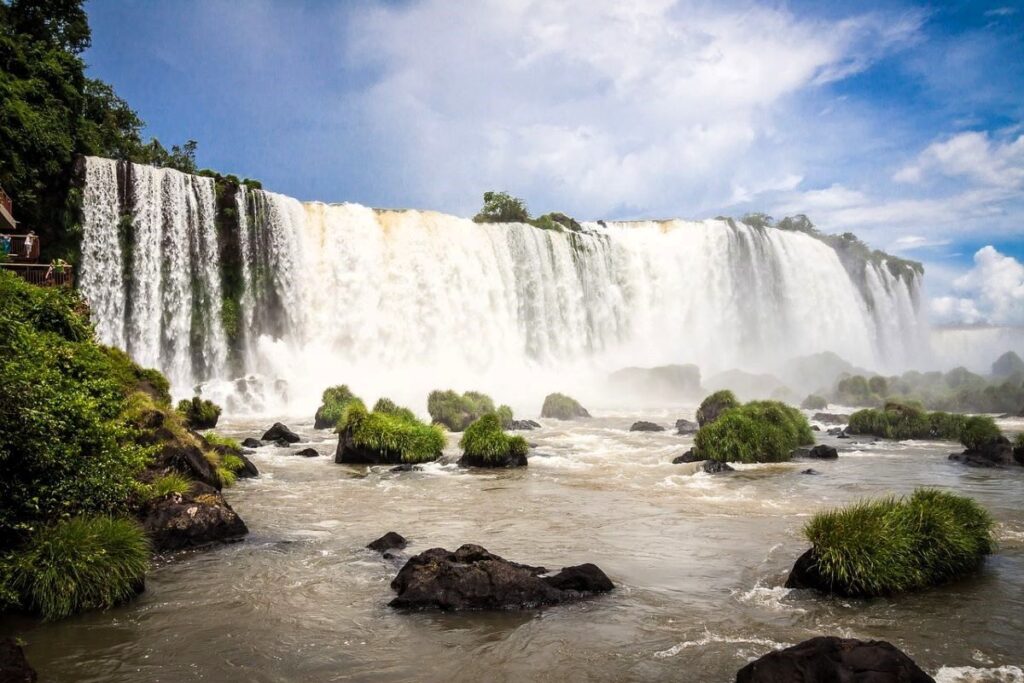
The mighty Iguazú Falls on the border with Argentina will leave you speechless. This massive system of 275 waterfalls stretches for nearly two miles, with pathways that let you get thrillingly close to the thundering water. The Brazilian side offers panoramic views of the falls, while a boat ride will take you right into the spray for an unforgettable experience.
Salvador
Salvador in Bahia state showcases Brazil’s African heritage with colorful colonial architecture, rhythmic music, and delicious cuisine. The historic Pelourinho district is a UNESCO World Heritage site with cobblestone streets, vibrant buildings, and churches decorated with gold. Capoeira performers practice their martial arts/dance in public squares, and the scent of acarajé (deep-fried bean fritters) fills the air.
The Amazon Rainforest
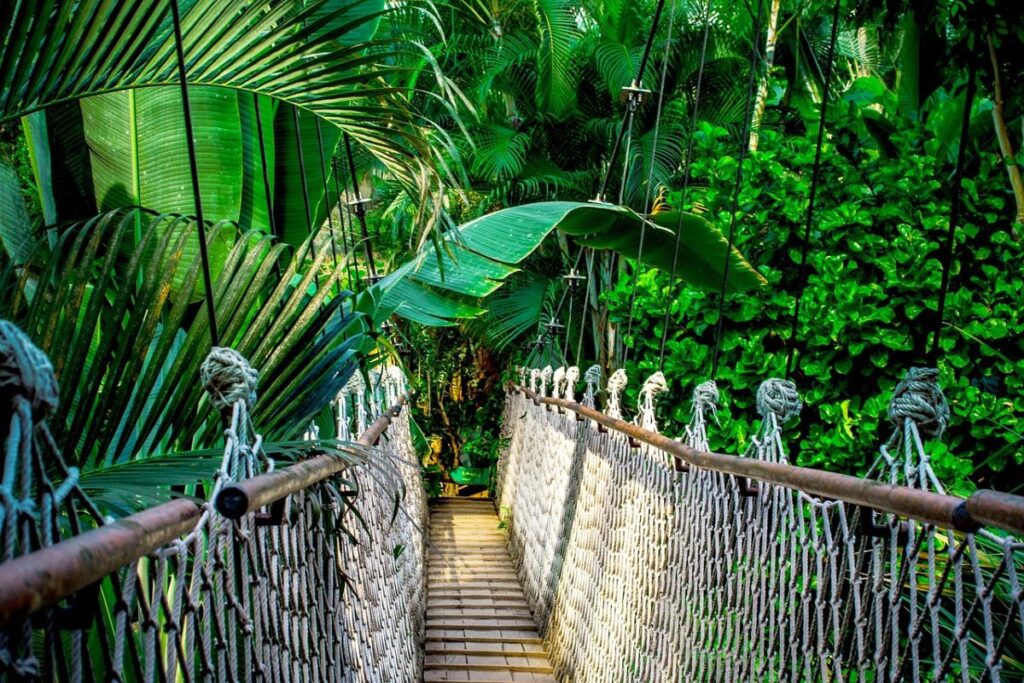
The Amazon rainforest offers adventure-seekers a chance to experience the world’s most biodiverse ecosystem. From the gateway city of Manaus, you can take boat tours to spot pink river dolphins, fish for piranhas, or stay in jungle lodges where guides lead you through the forest to spot wildlife. The meeting of the waters—where the dark Rio Negro joins the sandy-colored Amazon River without mixing—is a fascinating natural phenomenon.
Getting Around: Transportation Tips
Navigating Brazil’s vast territory can be an adventure in itself, with options ranging from modern metro systems to Amazon riverboats. Understanding your transportation choices will help you make the most of your time and budget.
For traveling between cities, domestic flights are often your best bet given Brazil’s enormous size. Airlines like LATAM, GOL, and Azul offer extensive networks, and booking a few weeks in advance can score you surprisingly affordable fares. A flight from Rio to Salvador takes just two hours, compared to a 24-hour bus journey!
Long-distance buses in Brazil are comfortable and much nicer than what you might expect. Companies like Itapemirim and Cometa offer various service levels, from standard to “leito” (bed) buses with seats that recline almost flat. These buses are a great option for overnight trips between neighboring states or cities 5-8 hours apart.
Within cities, transportation options vary widely. Rio de Janeiro and São Paulo have clean, efficient metro systems that are the fastest way to get around during rush hour. City buses run everywhere but can be confusing for visitors—ask your hotel which number you need and where to catch it. Most buses display their destinations on the front, and you typically pay the driver or attendant when boarding.
Ride-sharing apps like Uber and 99 work wonderfully in Brazilian cities and are often cheaper and more convenient than traditional taxis. They eliminate language barriers and haggling over fares, plus provide the security of a tracked ride.
If you prefer taxis, look for official ones at designated stands or ask your hotel to call one.
In Rio, don’t miss riding the iconic yellow streetcars (bondinho) to the hillside neighborhood of Santa Teresa for a charming, old-world experience.
In the Amazon region, boat taxis and river ferries are common modes of transportation, offering a glimpse into riverside life.
Renting a car makes sense mainly if you’re exploring coastal regions or rural areas. Brazilian driving can be aggressive, and navigation challenging, but the freedom to discover off-the-beaten-path beaches and small towns might be worth it. International driver’s licenses are recognized, and major rental companies operate throughout the country.
Essential Brazil Travel Tips
Brazil’s warm climate means mosquitoes are common year-round, so pack insect repellent with DEET, especially if you’re heading to coastal or Amazon regions. Consider bringing lightweight, long-sleeved clothing for extra protection during evening activities. If you’re visiting the Amazon or rural areas, talk to your doctor about malaria prevention and whether a yellow fever vaccine is recommended for your specific itinerary.
Brazilians are generally relaxed about timing—dinner often starts after 8 PM, and parties might not get going until midnight. Embracing this laid-back approach to schedules will help you enjoy your trip without frustration. “Brazilian time” is a real thing!
Tap water isn’t recommended for drinking in most areas. Stick to bottled water, which is widely available and inexpensive. Ice in restaurants and hotels is typically made from filtered water and is usually safe.
When greeting Brazilians, a kiss on each cheek is common between women and between men and women who know each other, while men typically shake hands. In more formal situations, everyone shakes hands. Don’t be surprised if conversations happen at closer proximity than you might be used to—personal space boundaries are different here.
Brazilian bathrooms often have a small trash bin next to the toilet for disposing of toilet paper, as the plumbing systems in many areas can’t handle paper. Following this practice helps prevent embarrassing clogs.
Power outlets in Brazil can be confusing as several different types exist throughout the country. A universal adapter with surge protection is a wise investment. The standard voltage is 127V/220V, so check if your electronics are dual-voltage or if you’ll need a converter.
Weather varies dramatically across Brazil’s regions. While Rio might be sunny and hot, São Paulo could be cool and rainy on the same day. Research typical conditions for your specific destinations and pack accordingly—lightweight layers are always a good strategy.
Conclusion
As one of the most captivating destinations in the world, Brazil blends natural wonder with cultural depth. Whether soaking in the energy of Rio or exploring colonial towns, this Brazil Travel Guide equips you with knowledge for an unforgettable trip. Begin your journey today and experience the magic of this extraordinary country.
Other Recent Posts:
-
Lake Bled Day Trip: The Perfect First-Time Adventure from Ljubljana
Welcome! If you’re spending time in Ljubljana and want to experience Slovenia’s most magical landscapes, a Lake Bled day trip from Ljubljana is an easy choice. With its glacial blue water, Lake Bled Island at its center, and Bled Castle perched high on the cliffs, this spot looks straight out of a fairytale—no need for…
-
Best Things to Do in Ljubljana, Slovenia (First-Time Visitor’s Guide)
Welcome! Thank you for visiting my blog about the best things to do in Ljubljana! In this guide I’ll share my own favorite spots and handy tips, best places to eat and some local insights you might not find elsewhere. Ljubljana, the charming capital of Slovenia, is stunning! The architecture is breathtaking! I promise you,…
-
Best Tango Shows in Buenos Aires: My Guide for First-Time Visitors
Buenos Aires is the birthplace of tango – raw, passionate, and unforgettable! But if it’s your first time in the city, choosing the right tango show can feel overwhelming. Do you go for the glamorous, cabaret-style performance with a gourmet dinner? Or do you slip into a smaller, historic venue where tango feels more like…
-
Recoleta Cemetery in Buenos Aires: History, Highlights, and Visitor Tips for 2025
Welcome to Recoleta Cemetery! “If you’re visiting Buenos Aires, this is a place you should see at least once. You’ll leave with photos, stories, and a deeper understanding of Argentina’s history.” Related Posts: Introduction: Why Visit Recoleta Cemetery? Recoleta Cemetery in Buenos Aires is not your typical graveyard.It’s more like an open-air museum filled with…
-
Tokyo vs Osaka: Your Guide To Understanding The Difference Between The Two Most Popular Cities in Japan [2025]
So the question is, Tokyo or Osaka which is better? Do you want to pick between the two? It can feel like it’s hard to decide, especially if it’s your first trip to Japan. We’ve been to both. We loved them both. We spent more days in Osaka than we did in Tokyo, and did…
-
The Ultimate 5-Day Itinerary in Tokyo: A Fun and Easy Guide for First-Time Visitors
5 Day Itinerary in Tokyo – A City of Contrasts and Wonders I’ve created this 5 day itinerary in Tokyo to help you get the most out of your time here. It’s based on my own experience in this incredible city. Tokyo is one of the most exciting cities in the world. It’s a place…

